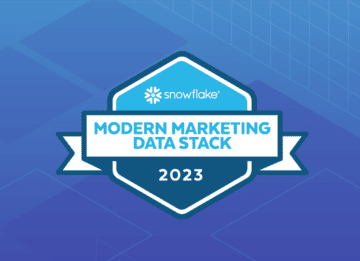How to Make Accurate Data A Priority for Your Marketing Team
For years, marketers have heard that they need to be data-driven, data-informed, and data savvy. What once was a much-needed battle cry has turned into a stale phrase, as marketers have had to pivot towards a new path to purchase while data insights have gotten more complex and nuanced. Using data to market to customers has transcended basic personalization on a single platform to centralized hubs that can distribute identities across inbound and outbound channels.
To truly be a data-driven marketing department, marketers should use person-level data to help inform and predict future behaviors. In order to gain those insights, you need to choose a data sourcing strategy that will help you create relevant interactions with up-to-date data.
What kind of data should I be using?
There are three types of data that you can source from.
- First-party data – in the age of GDPR and CCPA, first-party data sourced from your company’s own online and offline activities has become the starting point for marketing departments. Customer sales history and website visits are examples of first-party data. This data is often used as a seed audience for look-alike capabilities that are then used for activation.
- Second-party data– is essentially someone else’s first-party data. In marketing, this data often comes from a publisher or an ad network and is collected through their data taxonomy.
- Third-party data– these data points are generated on a variety of websites and sources and then compiled by a data reseller or Data Management Platform (DMP) licensing by other organizations.
If you’re looking for personalized campaigns, omnichannel strategies, or enhanced customer experiences, you’ll likely want a sourcing strategy that starts with first-party data and then builds on that strategy with second and third-party data.
Consider this: to create relevant offerings for your customer base, you’ll need to know more about them than their location and latest transaction. You could use their affinities and interests to understand that your customer in New Jersey whose latest transaction with your travel site was to book a trip to Florida. Layering on their social data and affinities, you could see that this customer is an avid skier, who frequently interacts with amateur ski athletes and snow equipment retailers. With this information, you can send deals for ski resorts in Vermont and Mt. Poconos, giving your customer a deal that aligns with their current interests instead of their past purchases.
How do I ensure the data is accurate and clean?
Clean data is a problem for many companies, as either bandwidth or resources keep them from making a proper plan. In fact, 30% of organizations currently have no strategy to update inaccurate or incomplete records.
Knowing new data points or opt-out information in real-time can help keep you in good standing with regulatory compliance. With the addition of an identity graph to ensure recency and accuracy of your data, you can gain peace of mind knowing your data asset is up to date.
How can my marketing team use data strategically?
We asked marketing and data experts from Pitney Bowes, Calibermind, Mortgage Cadence, and more that same question. Here’s what they had to say.
When you consider that an organization can generate up to 70% more revenue based solely on clean data, using the right provider to help onboard new data is essential.
Want to learn more ways to enhance your customer experience with data?
View our infographic to discover three ways to make the most of your data for higher ROI.
Recent Blogs
-
 September 21, 2023 Discover How FullContact is Building Trusted Customer Relationships through Snowflake's Native Application Framework Customer 360, Website Recognition, Identity Resolution
September 21, 2023 Discover How FullContact is Building Trusted Customer Relationships through Snowflake's Native Application Framework Customer 360, Website Recognition, Identity Resolution -
 September 20, 2023 Transform Your Customer Experience with FullContact Customer Recognition and Boost Your Conversions Website Recognition, Identity Resolution
September 20, 2023 Transform Your Customer Experience with FullContact Customer Recognition and Boost Your Conversions Website Recognition, Identity Resolution -
 September 14, 2023 FullContact Recognized as a Leader in Snowflake’s Modern Marketing Data Stack Report FullContact News, Partnership
September 14, 2023 FullContact Recognized as a Leader in Snowflake’s Modern Marketing Data Stack Report FullContact News, Partnership
